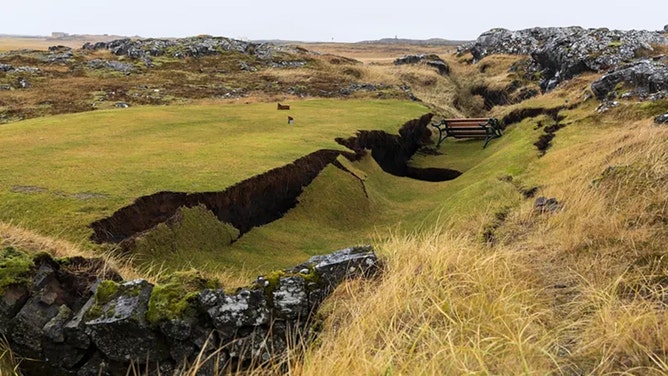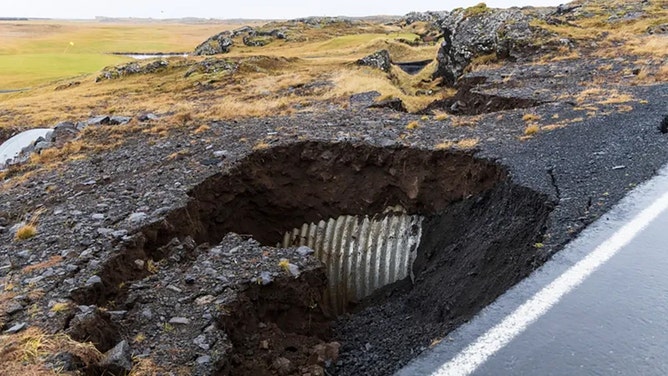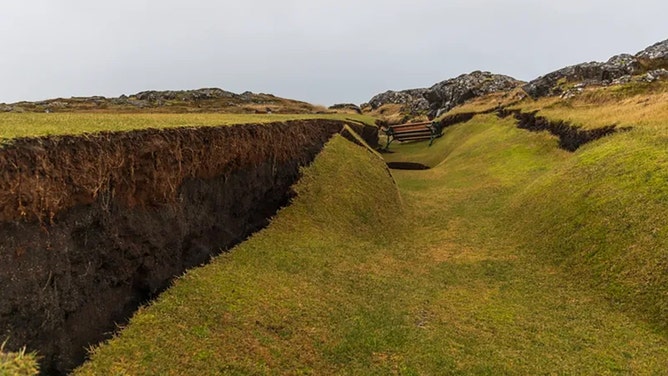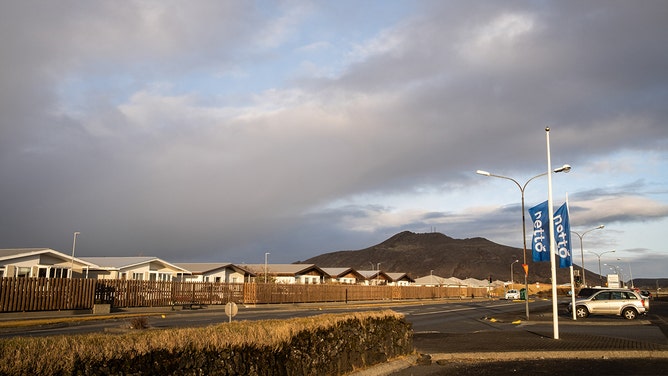'High' risk of volcanic eruption in Iceland prompts evacuation as over 3,200 earthquakes recorded
If an eruption were to happen, the Icelandic Met Office said it is more likely to occur on the northern side of the magma intrusion, potentially near Sundhnjúkagígur.
Iceland officials warn of possible volcanic eruption as thousands of earthquakes continue to rattle country
Iceland's government has declared a state of emergency as a series of powerful earthquakes rock the country's southwestern peninsula, signaling an increased likelihood of a volcanic eruption in the region.
As of Sunday, November 12, the Icelandic Met Office has advised there is a "significant likelihood" of a volcanic eruption in the coming days. Continuous coverage of the potential volcanic eruption and earthquakes in Iceland has moved here.
GRINDAVIK, Iceland – Iceland's government declared a state of emergency and began evacuations Friday following thousands of powerful earthquakes on a southwestern peninsula that indicate an increased likelihood of a volcanic eruption.
"We are still in the middle of this, but what we are grateful for is that there have been no casualties," Iceland President Guðni Th. Jóhannesson told national public service broadcaster RÚV. "There has been enormous damage to houses and structures, but everything can be repaired."
THOUSANDS OF EARTHQUAKES RATTLE ICELAND AS OFFICIALS WARN OF POTENTIAL VOLCANIC ERUPTION
The Icelandic Met Office (IMO) has reported over 3,200 earthquakes in the last 48 hours. The most recent earthquakes have occurred near Grindavík, close to the southwest end of where scientists have said a magmatic dike has formed.
Although there have been no signs of magma reaching the surface yet, the town of Grindavík, with a population of 3,669, was evacuated successfully as a precaution Friday night, according to Iceland's Minister for Foreign Affairs Bjarni Benediktsson.
"It is probably unthinkable for most people to have to flee their homes late at night, unsure of what will happen next," he said. "Grindvíking's strength is admirable."
According to the IMO, it is unknown where an eruption might occur, but the orientation of the 9.3-mile-long dike gives a good indication of possible sources.
"The likelihood of a volcanic eruption is high, and that an eruption could be possible on a timescale of just days," the IMO said. "Based on the extent of the dike, magma could emerge from its southern (end), just outside of Grindavik. Therefore, the likelihood of a submarine eruption has also increased, so preparations must be made for the possibility of explosive activity."
Benediktsson said that seismic activity is a normal part of life in Iceland and that the current activity is contained and localized. There have been no disruptions to flights to and from Iceland, and international flight corridors remain open.
4,700 EARTHQUAKES IN 72 HOURS COULD SIGNAL ERUPTION OF ICELANDIC VOLCANO

Numerous seismographs have been installed by a team of geologists from the University of Iceland.
(Raul Moreno/SOPA Images/LightRocket / Getty Images)
On Friday, two strong quakes were felt across much of the country's southern coast, with the largest one measuring a magnitude of 5.2.
"Since midnight, around 800 earthquakes have been measured in the region where the magma intrusion is occurring," the IMO said during a noon Saturday update. "The earthquake activity has diminished slightly in the past hours, but it remains high."
According to local media, more than 22,000 earthquakes have occurred in the Reykjanes Peninsula area since Oct. 25.
The swarm of earthquakes has also forced the Blue Lagoon geothermal spa, one of Iceland's most popular tourist attractions, to temporarily close for a week.
WHAT ARE THE LARGEST EARTHQUAKES TO STRIKE THE US?

(FOX Weather)
Scientists said indications suggest that the amount of magma involved in the most recent activity is significantly more than what was observed in the largest magma intrusions associated with the eruptions at Mt. Fagradalsfjall last year and this summer.
"I don't think it's long until an eruption, hours or a few days," volcanologist Thorvaldur Thordarson told RÚV. "The chance of an eruption has increased significantly. We can't rule out that this will stop, and I have to say right now that I hope it will stop and we won't have an eruption."
WHEN AN EARTHQUAKE CAUSED THE MISSISSIPPI RIVER TO FLOW BACKWARDS
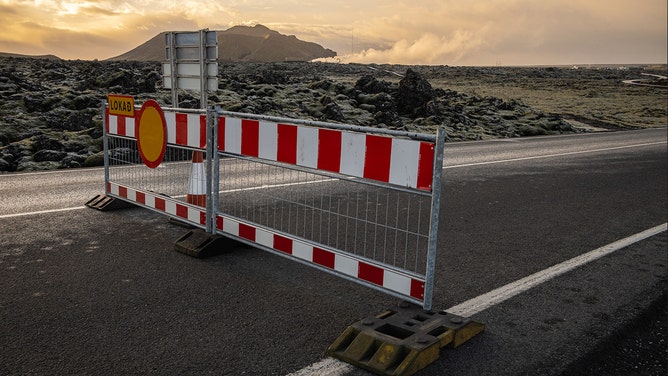
The access road to Blue Lagoon has been closed to avoid incidents in the area in the event of a possible volcanic eruption.
(Raul Moreno/SOPA Images/LightRocket / Getty Images)
Iceland has the highest number of active volcanic systems in Europe, with more than 30 currently active.

